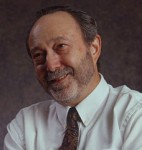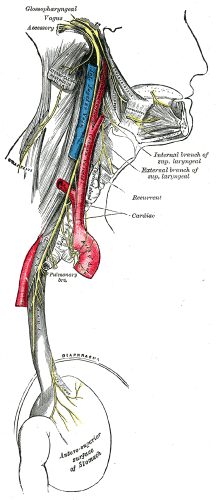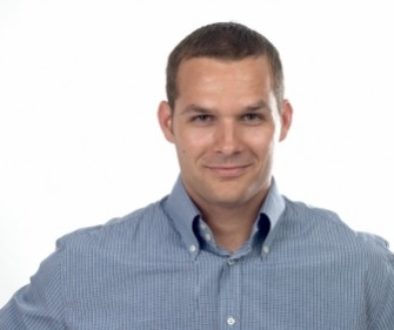Stephen Porges on Polyvagal Theory and Healing Trauma

Stephen Porges, PhD, speaks about the Polyvagal Theory, healing trauma and PTSD, and his own psychological and spiritual journey.
We learn that Dr. Porges was a clarinetist, a practice he likens to pranayama yoga.*

We also learn that he first became interested in human psychology as a result of his experiences in childhood.
The Polyvagal Theory: A New Understanding of the Nervous System
Stephen Porges’ Polyvagal theory significantly reworks our understanding of how the nervous system responds to threat and trauma. As Elizabeth explains in an upcoming article, the new theory is relevant both to mediation and to healing trauma.
Overview of the Autonomic Nervous System
By way of background, the Autonomic Nervous System (ANS), a part of the peripheral nervous system, regulates internal organ functions, such as heart rate, digestion rate and pupil dilation. It also responds to trauma or threat.
The ANS is usually conceptualized as consisting of two branches, the sympathetic and parasympathetic nervous systems. The sympathetic nervous system activates the body, especially during emergencies (“fight-or-flight”); the parasympathetic is calming (“rest-and-digest”).
The balance between the two systems is usually said to determine ANS functioning.
The Ventral Vagus Nerve
Dr. Porges has expanded our view of the subject by emphasizing a third factor: the vagus nerve and its role, through its branches, in regulating the heart, face, abdominal viscera and breath. It also communicates with the brain.

“Social Engagement” and Conflict Resolution
The vagus nerve, or more precisely the ventral branch of the vagus nerve, controls the muscles of the face, heart and lungs — parts of the body used to interact with others. This distinctively mammalian system thus fosters what Porges calls “social engagement.”
According to Dr. Porges, social engagement, in turn, tends to “down regulate” (calm) the sympathetic nervous system, and the fight response.
Stated another way, it is in large part through our face/heart/brain connection, mediated by the ventral vagus nerve, that we learn to temper our responses to interpersonal threats and challenges.
In Elizabeth’s view, this calming aspect of “social engagement,” via the vagus nerve, helps explain the neurobiology of the “magic” of effective mediation and the IDR cycle.
The Dorsal Vagus Nerve
Another branch of the vagus, the dorsal vagus, regulates organs below the diaphragm. It is instrumental in activating the “shutdown” of the body seen in cases of overwhelming trauma. From an evolutionary standpoint, this is a much older part of the nervous system.
Recent modalities for healing trauma, such as Peter Levine’s Somatic Experiencing, which Elizabeth has been studying intensively for the last three years, use details from Dr. Porges’ description of dorsal and ventral vagal functioning to develop gentle, somatically based strategies for releasing trauma.
. . .
* As Dr. Porges has frequently observed, the ventral vagus also regulates activities such as playing wind instruments like the clarinet. These practices involve both regulating the breath (like pranayma) and engagement with others.
** Also note that technically the vagus is actually a part of the parasympathetic nervous system. This point cannot be dealt with fully here for reasons of space.



February 12, 2020 @ 2:55 am
Kamini, one of my loved ones has Parkinson’s, and he is getting relief from seeing a functional neurologist. Functional neurology seems to practically operationalise many of the theoretical aspects discussed here… I wish you all the best…
February 12, 2020 @ 11:30 am
Thank you for connecting Catherine. I thought I would mention the website http://www.outthinkingparkinsons.com/ where a guy, Gary Sharpe, is working along those lines. He is also on Facbook Best to you. Elizabeth
January 12, 2019 @ 10:37 pm
My husband has Alzheimer’s and I am his sole caregiver. I do believe that I am suffering from a form of PTSD.
My husband has never being a nice man to me and has emotionally and verbally abused me. I’m trapped in Canada as my family is all in England. We have two sons who live in the same town as those but have nothing to do with us.
Not being as educated as you people who’ve written these papers, I do find myself relating to some of the topics that you brought up about depression about stomach problems, and a lot of nervous upset I’ve seen a lot of the things what who have written about do relate to me. I first heard about the dorsal Vega when I went to the presentation Teepa Snow was giving to caregivers and health professionals dealing with Alzheimer’s Dementia Parkinson’s loved ones and clients, when she was explaining to us about not helping support your loved one client by holding them underneath the arm as that’s where the dorsal Vega vein runs and the lizard brain wants to protect it.
I do you believe that some of you professional people could come up with therapy for those of us caregivers that need you to help us combat caregiver burnout to save us and our loved ones as if we’re are not well enough to look after them who will be well enough to look after them.
I hope that someone could look into it and maybe let me know, there are millions of caregivers wow probably trillions around the world looking after loved ones at home and clients in hospital and long-term care facilities who would benefit from some training regarding the Dorsal Vegal vein and the Poly Vegal vein in regard to relaxation, handling depression and hitting the reset button in our brains to help us survive the ongoing trama of grief, dealing with the ‘long goodbye’.
Yours respectfully,
Laraine A. Goodban
289-878-2790
August 15, 2019 @ 5:46 pm
Hi Laraine,
I just read the comment you posted at the beginning of the year. I can’t add anything to the discussion, (I just clicked on the link to learn more about trauma recovery), but I do hope things improve for you. I can’t imagine the stress and isolation you’re feeling – here’s hoping you’ll be in a position to care for yourself, and rediscover what makes you happy, sometime soon.
Best of luck. Take care. X
August 7, 2016 @ 9:48 am
My husband just sent me this link and I read the replies before listening to the interview. I also read the wikipedia link. So, I decided to leave a comment for consideration by those (Jane and Kamini!) looking for a physical way of getting this theory into their bodies!
The Polyvagal Theory looks like an explanation of why the Vagal Procedure in Bowenwork or Bowen Therapy actually works for anxiety, heart conditions, autism and literally a host of other conditions. (As a Bowen Therapist I am thrilled to have this information!)
From the very first two “moves” used in Bowen Therapy the body becomes extremely relaxed. It uses the nerve pathways and facia tissue to transmit signals to the brain. The brain interprets them and sends out instructions to the body to reset and to activate the person’s innate ability to heal.
Bowen Therapy is a very gentle modality which affects not only the muscles and tissues, but also the organ systems of the body. It is the only therapy I know, that quietly asks the body to reset itself. This happens in the waiting times between sets of moves, which allow for integration. In this respect, Bowen Therapy stands alone!
Bowen Therapy is suitable for newborns, the elderly and all ages between. It is of immense benefit for new injury or trauma and can also help the body recover from old stresses caused even decades before!
I could go on but I hope I have piqued your interest enough to give it a try and trust there is a practitioner near you. Look for one on this link http://www.americanbowen.academy
Also, feel free to contact me with any questions. Bowen Blessings…
August 9, 2016 @ 1:41 pm
Thanks Yvonne… I appreciate your taking the time to contribute… Of course there are a number of modalities for getting into our bodies, but it is helpful to hear about the ones different people find useful… Best to you and all… Elizabeth
March 3, 2015 @ 4:53 pm
Enjoyed your article very much! Writing about the theory isn’t easy…
March 3, 2015 @ 4:51 pm
hi Elizabeth
I learned about the Polyvagal Theory in my TRE trainings. TRE stands for Tension/Trauma Releasing Exercises. Have you heard of it? The exercises are a simple tool that almost anyone can use to deal with stress. It is a gentle, self-regulating technique to release trauma that can stand alone, when a therapist is not available or desired, or be added into any healing plan such as Somatic Experiencing without conflict. The exercises activate the “tremor mechanism”.
November 15, 2014 @ 2:29 pm
Thanks for the synopsis Elizabeth. I’m wondering if, based on polyvgal theory and knowing that the nervous system needs to feel safe, if any effective treatments have been devised for dealing with chronic anxiety and hyper vigilance? I worked out a while ago that it must be mainly physical, but don’t know how to press the “reset” button!
Many thanks for any help you can give us.
November 16, 2014 @ 8:44 am
Hi Jane,
I am glad the article was of use to you. Without knowing you, unfortunately, I can only answer in general terms. But I can say that hypervigilance and anxiety often happen to people who, like you, me and many others, have experienced trauma.
Somatic Experiencing(trademark), a modality developed by Peter Levine which works through the body, is the one that I have found useful both in my work on myself and my work with others. Here is a link http://www.traumahealing.com/somatic-experiencing/index.html to some information about it. I plan to do more writing about it, and a video speaking about it soon.
There are also other body-based modalities, like Hakomi or the work of Pat Ogden. I don’t know these firsthand, as I have concentrated on Somatic Experiencing but from what I read they are quite similar. Trauma techniques which involve reliving the trauma rather than gently moving the body through one’s experiences are not recommended, at least by me, though they may be considered by some standard treatments for trauma.
A good book to read is Waking the Tiger by Peter Levine to get a sense of what I am speaking of. Let me know how this works for you. Many blessings for your journey which will teach you so much.
Elizabeth
November 7, 2014 @ 10:44 pm
I have written a very easy to read book on autism and the polyvagal theory, called Reframe Your Thinking Around Autism. It looks at the ployvagal theory, the parasympathetic nervous system and then brain plasticity to how to help heal autism. It comes with lots of fun pictures. I would love your feedback on it Elizabeth.
November 9, 2014 @ 11:38 am
Thanks for letting me (us) know about your book, Holly. I myself have been trying to write about Porges’ polyvagal theory in a simple way and found it no easy matter! So I would love to see how you have dealt with it. E
June 9, 2014 @ 11:16 am
Hi Kamini,
Thanks for connecting and speaking out. I know that a friend and colleague, William Singletary, MD, has edited and contributed to a book on autism. I have a link for you to the book below. His work might be the next place for you to go, as I know he also relies on and has analyzed autism from the perspective of polyvagal theory… I hope this is helpful…
Elizabeth
http://www.amazon.com/Autism-Spectrum-Disorder-Perspectives-Psychoanalysis/dp/0765708620
June 9, 2014 @ 11:03 am
I am blown away by the polyvagal theory. I understand that it may be impacting my son’s autism and several other bio medical issues that he has? I had attended Dr Porges talk at ABAI Chicago. I need more information with regards to what to do next? How do we go about with the healing? Looking for answers……..